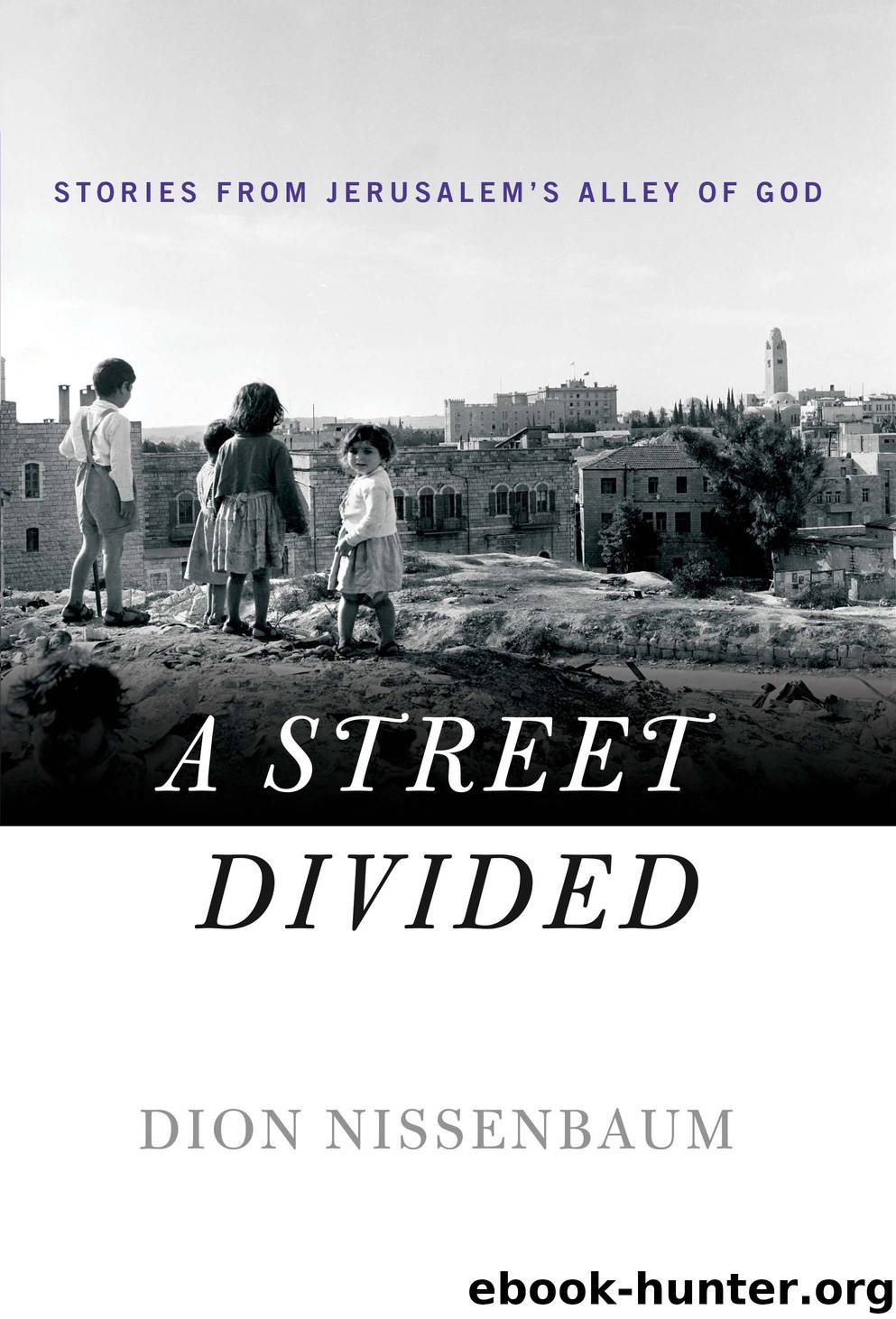A Street Divided by Dion Nissenbaum

Author:Dion Nissenbaum
Language: eng
Format: epub
Publisher: St. Martin's Press
Published: 2015-08-04T04:00:00+00:00
Five
The Collaborator
Ameel.
The slur followed him everywhere he went.
Friends would whisper it behind his back with a hiss.
Ameeeeel.
Assailants would shout it from the street as they tossed Molotov cocktails at his house. Guys would spray-paint the warning, the implied threat, on the stone walls outside his home on Assael Street:
Collaborator.
Beware of the collaborator: Abu Fadi.*
To call someone a collaborator in Jerusalem is to make them a marked man. Abu Fadi wore it as a badge of honor. He wielded it as a weapon. He used the fear his neighbors on Assael Street had of collaborators to intimidate. He was not cowed. He was proud.
Sitting in his dimly lit living room smoking cigarettes and playing backgammon with a friend one afternoon in 2007, Abu Fadi said he didn’t care what his Arab neighbors thought of him. As far as he was concerned, they could move to some other Middle East nation and live under one Arab tyrant or another.
“Israel is the best country in the world,” he said between rolls of the dice. “Period.”
If someone asked Abu Fadi whether he preferred to be called an Arab-Israeli, a Palestinian-Israeli or a Palestinian, he would choke on the question.
“I’m Israeli,” he said, again and again. “One hundred percent Israeli.”
With the thick living room curtains drawn, Abu Fadi sat on the edge of his couch in dress pants and a sleeveless white T-shirt that showed off a heart-shaped tattoo on his shoulder. His den felt claustrophobic, and the smoke choked the room. It seemed like Abu Fadi had embraced his reputation as a small-time thug. He silently sized up strangers while sitting on his chocolate-colored fabric couch set with fake gold frames.
Abu Fadi pointed to a wood carving hanging on the living room wall.
“See that?” he asked.
It was the shank-shaped map of Palestine as it existed under British rule until 1948, the land meant at that time to be split so two new countries—Israel and Palestine—could live side by side. The image is ubiquitous in Palestinian iconography. It serves as a reminder that there was once, not so long ago, a place called Palestine. Uncompromising Palestinian nationalists hold up the old lines as borders they hope to reclaim someday by eliminating Israel from the map. Abu Fadi looked at the image and saw something else.
“That,” he said, “is Israel.”
Not Palestine. Not Israel and Palestine. Just Israel.
It’s a view not even Israeli moderates imagine when they look at the image. It’s the view of the most uncompromising of Israelis who see the land—all of the land—as the G-d-given property of the Jewish people. It’s the kind of thing you hear from armed Israeli settlers living in illegal West Bank trailer park compounds where they have defied their own government to seize more land.
Abu Fadi didn’t care that Jews didn’t consider him one of G-d’s Chosen People. He was Israeli. A full Israeli citizen, unlike most of his neighbors on the eastern side of Assael Street. That gave him a right most of them didn’t have: to vote in Israel’s national elections.
Download
This site does not store any files on its server. We only index and link to content provided by other sites. Please contact the content providers to delete copyright contents if any and email us, we'll remove relevant links or contents immediately.
| Africa | Americas |
| Arctic & Antarctica | Asia |
| Australia & Oceania | Europe |
| Middle East | Russia |
| United States | World |
| Ancient Civilizations | Military |
| Historical Study & Educational Resources |
Empire of the Sikhs by Patwant Singh(22775)
The Wind in My Hair by Masih Alinejad(4853)
The Templars by Dan Jones(4561)
Rise and Kill First by Ronen Bergman(4554)
The Rape of Nanking by Iris Chang(4027)
12 Strong by Doug Stanton(3422)
Blood and Sand by Alex Von Tunzelmann(3061)
The History of Jihad: From Muhammad to ISIS by Spencer Robert(2509)
Babylon's Ark by Lawrence Anthony(2437)
The Turkish Psychedelic Explosion by Daniel Spicer(2249)
Gideon's Spies: The Secret History of the Mossad by Gordon Thomas(2240)
No Room for Small Dreams by Shimon Peres(2240)
Inside the Middle East by Avi Melamed(2234)
Arabs by Eugene Rogan(2198)
The First Muslim The Story of Muhammad by Lesley Hazleton(2159)
Bus on Jaffa Road by Mike Kelly(2040)
Come, Tell Me How You Live by Mallowan Agatha Christie(2031)
Kabul 1841-42: Battle Story by Edmund Yorke(1929)
1453 by Roger Crowley(1883)
